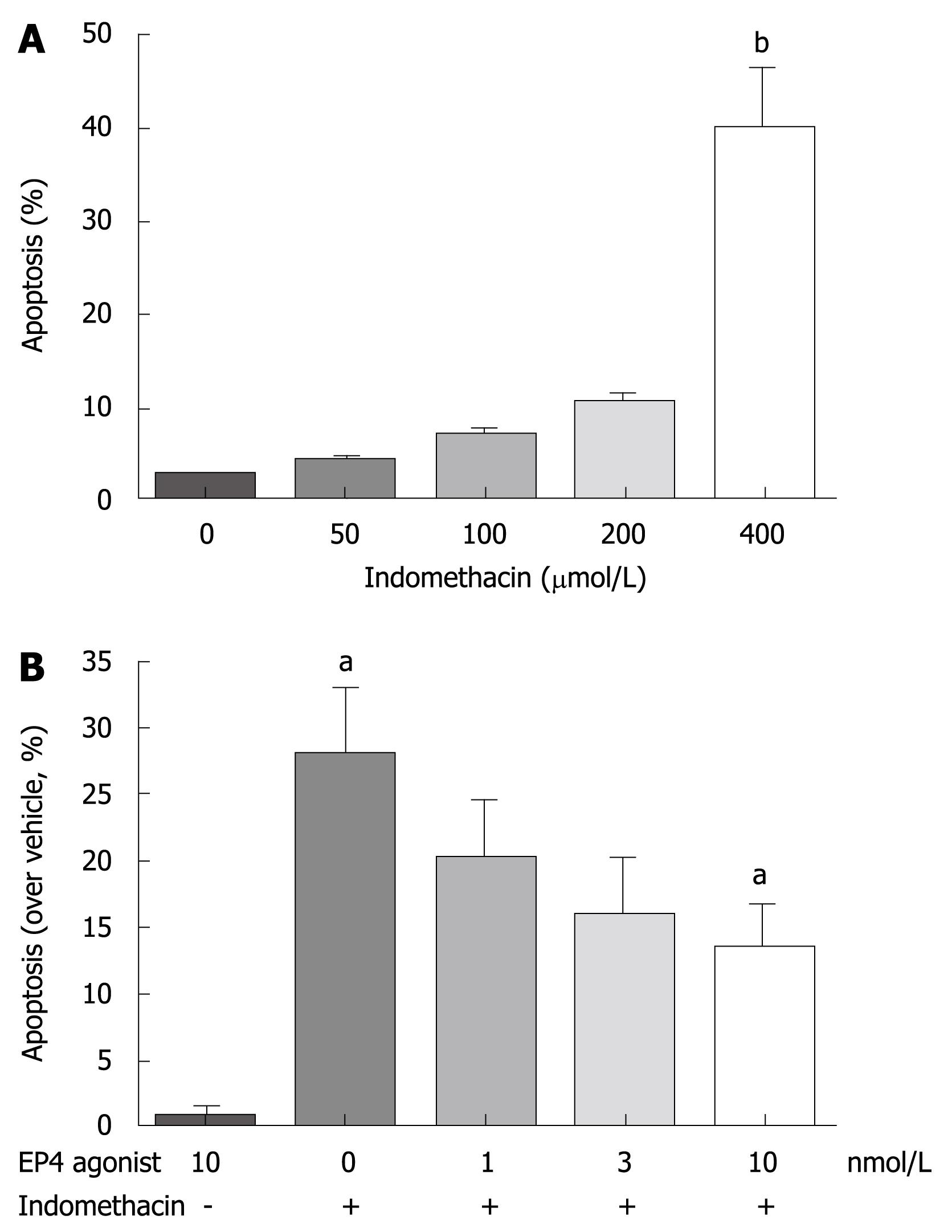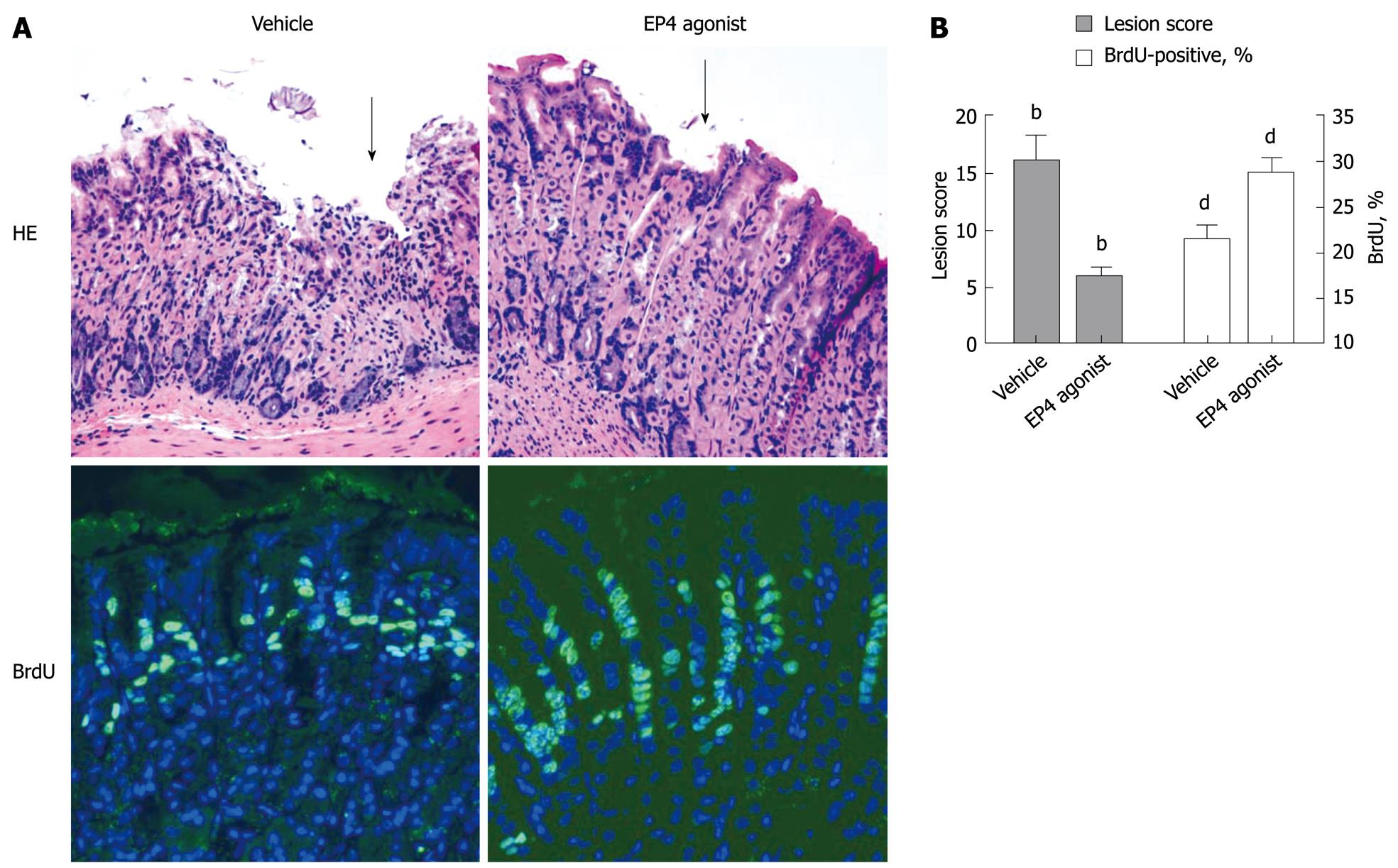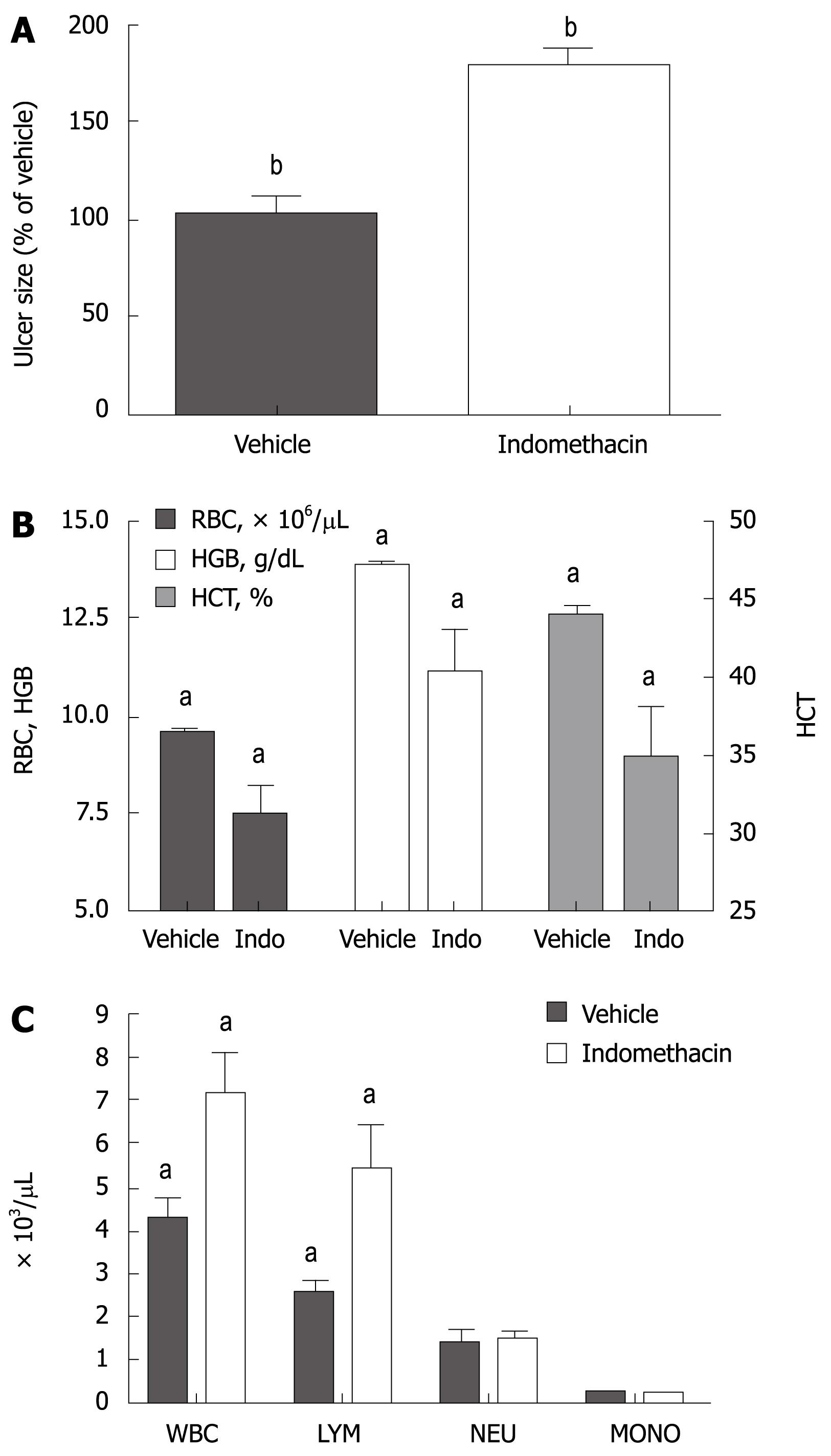Copyright
©2009 The WJG Press and Baishideng.
World J Gastroenterol. Nov 7, 2009; 15(41): 5149-5156
Published online Nov 7, 2009. doi: 10.3748/wjg.15.5149
Published online Nov 7, 2009. doi: 10.3748/wjg.15.5149
Figure 1 EP4 agonist effect on indomethacin-induced apoptosis in human gastric mucus epithelial cells (AGS).
AGS cells were pre-treated with EP4 agonist for 30 min followed by addition of indomethacin for 24 h and sorted by flow cytometry after PI staining. Sub-2N population was quantified as apoptotic cells. A: indomethacin dose-dependently induced apoptosis, bP < 0.0001 vs the rest, n = 4; B: shown are values minus vehicle controls, aP < 0.005, n = 5-9; indomethacin dose was 400 μmol/L.
Figure 2 EP4 agonist effect on indomethacin-induced gastric lesion in mice.
EP4 agonist was orally administered 24 h and 30 min prior to indomethacin dosing at 20 mg/kg. The stomachs were assessed for mucus lesions 24 h after indomethacin dosing. A: HE and BrdU immunohistochemistry staining of stomachs (× 200). Superficial mucosal cells had sloughed off gastric mucus with infiltration of inflammatory cells in vehicle-treated group (arrow points to one lesion site). The mucus of EP4 agonist-treated stomachs was almost normal, except for a sparse focal defect of superficial mucous cells without inflammatory cells (arrow points to one lesion site). BrdU labeling showed robust mucous epithelial regeneration and migration in EP4 agonist-treated rats compared with that of vehicle treatment; B: Quantification of gross lesion under dissection microscopy (× 16) and percentage of BrdU-positive cells among mucus cells. Shown are lesion scores, bP < 0.0001, n = 10; and BrdU percentage, dP < 0.01, n = 10, respectively.
Figure 3 Low dose indomethacin effect on chronic gastric ulcer of mice.
Chronic gastric ulcers were created by 40% acetic acid as detailed in “Methods”. Then the animals were given indomethacin from day 3 to day 6 at 3 mg/kg per day and the ulcers were assessed after blood withdrawal on day 7 post-surgery. A: Ulcer sizes were measured under dissection microscopy with 16 × magnification; bP = 0.006, n = 18; B: Hematology analysis of ulcerated animals on day 7, aP < 0.05, n = 6; RBC: Red blood cell; HGB: Hemoglobin; HCT: Hematocrit; C: Hematology of ulcerated animals on day 7, aP < 0.05, n = 6; WBC: White blood cells; LYM: Lymphocytes; NEU: Neutrophils; MONO: Monocytes.
Figure 4 EP4 agonist alleviated indomethacin effect on gastric ulcer in mice.
Mice with gastric ulcer were given low-dose indomethacin (3 mg/kg per day) with or without EP4 agonist from day 3 to day 6 post-surgery. The blood was withdrawn on day 7 for hematology analysis. A and B are results of hematology analysis, aP < 0.05, n = 20.
Figure 5 EP4 agonist promoted gastric ulcer healing in mice.
Mice with gastric ulcers were treated with vehicle or EP4 agonist from day 3 to day 10 post-surgery. Gastric ulcers were assessed on day 7 or 11, respectively. A is quantification of ulcer sizes under dissection microscopy with 16 × magnification, bP = 0.003, n = 16; B is representative images of gastric ulcers; the macroscopy images are at original magnification, × 16; the microscopy images are at original magnification, × 40 from slide sections.
- Citation: Jiang GL, Im WB, Donde Y, Wheeler LA. EP4 agonist alleviates indomethacin-induced gastric lesions and promotes chronic gastric ulcer healing. World J Gastroenterol 2009; 15(41): 5149-5156
- URL: https://www.wjgnet.com/1007-9327/full/v15/i41/5149.htm
- DOI: https://dx.doi.org/10.3748/wjg.15.5149













